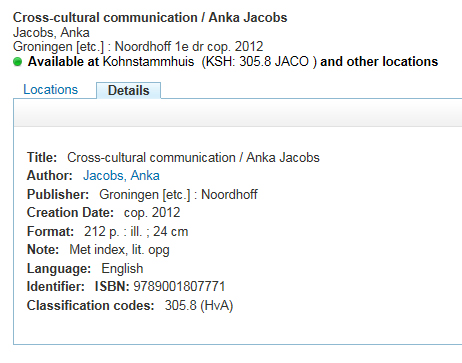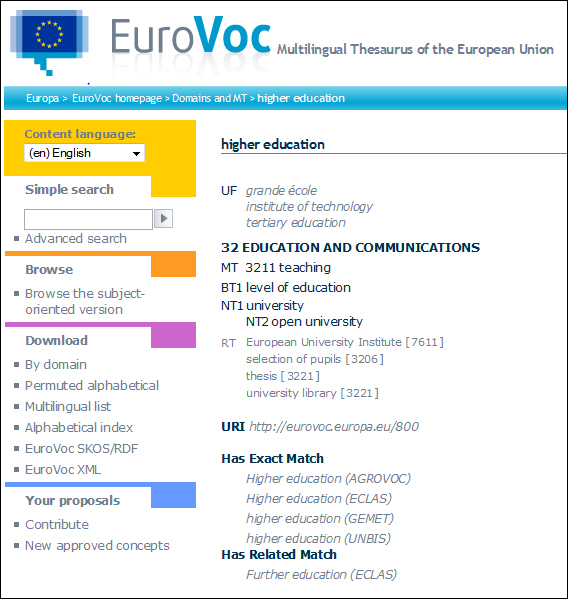Thesauri and classification schedules
Thesauri
A thesaurus shows the interrelationship of subject headings . It also gives alternatives for these subject headings (see Subject headings).
When you look up a subject heading in a thesaurus, you will also be shown the broader term (BT=Broader Term), narrower term (NT=Narrower Term), related term (RT=Related Term) and terms with the same meaning which are not in use as subject terms, but refer to the correct subject term (USE ...). This is extremely useful if you do not yet know exactly which search term to use.
In this example from the EuroVoc, the Multilingual Thesaurus of the European Union the shown subject term is Higher education.. (Zie ook Search terms) A broader term is ‘Level of education’, narrower terms (NT) are ‘University’ and ‘Open University’. The subject term ‘Higher education’ is used for (UF) "grande école", "Institute of technology" and "tertiary education".
Classification schedules
Classification schedules render the content of a document in codes, placed in a hierarchical model, as you can see in this example from the HvA catalogue 305.8 Communication; general.

There are many different classification schedules. The most well-known general schedule is the SISO classification schedule. This is used by most HvA library locations and all Dutch public libraries.
In addition, there are also classification schedules covering a particular field of study, for example the NLM for the medical field. This is used by the HvA School of Health Professions library.

